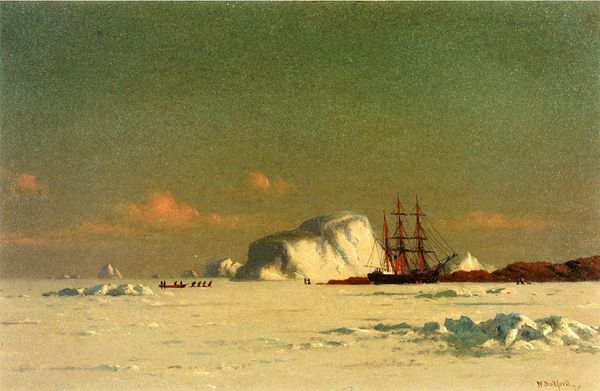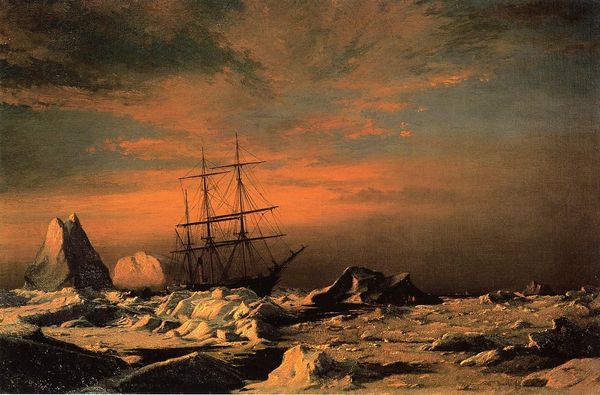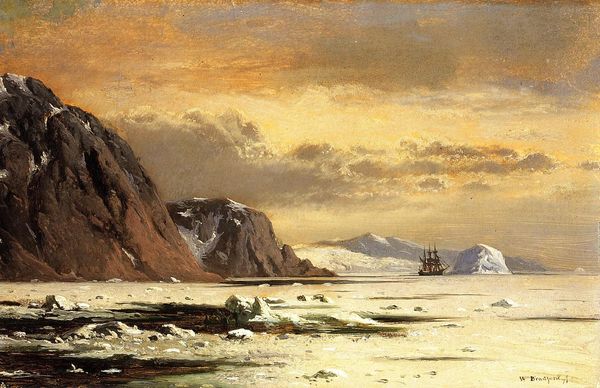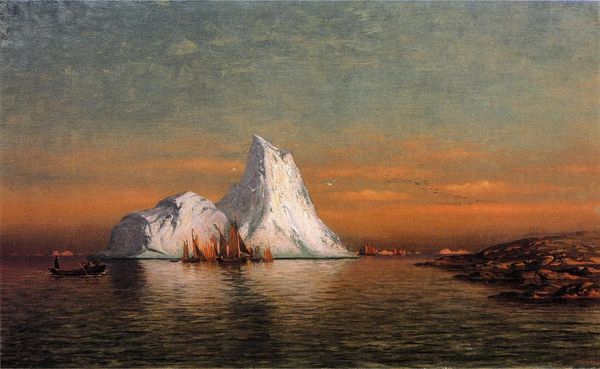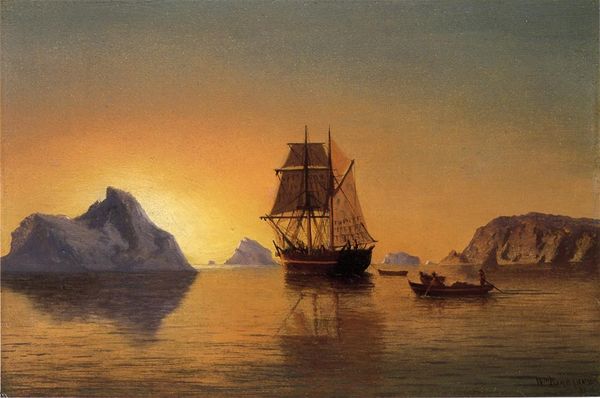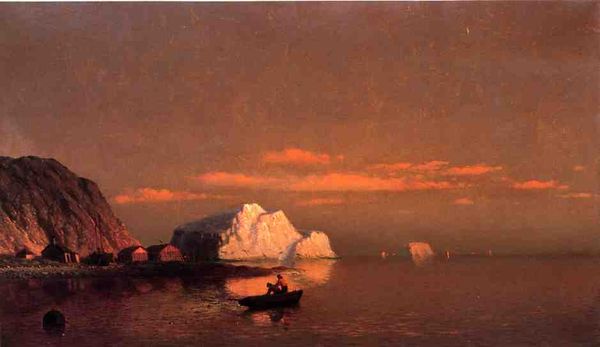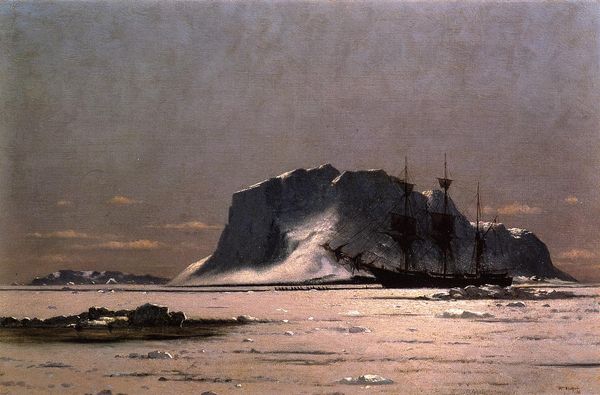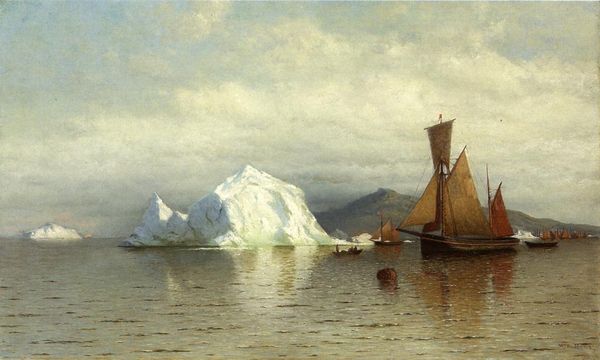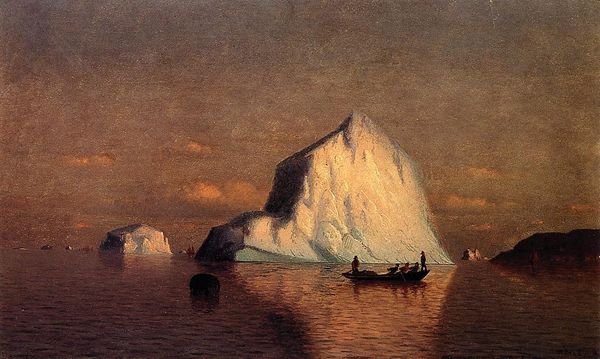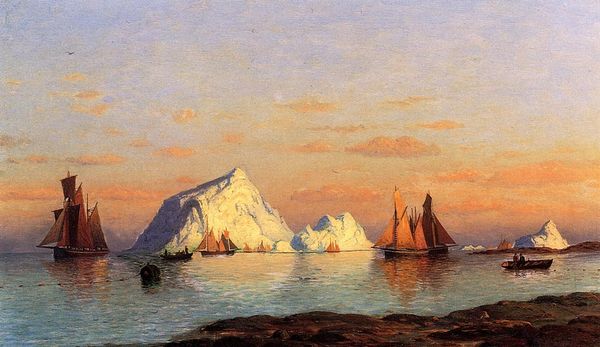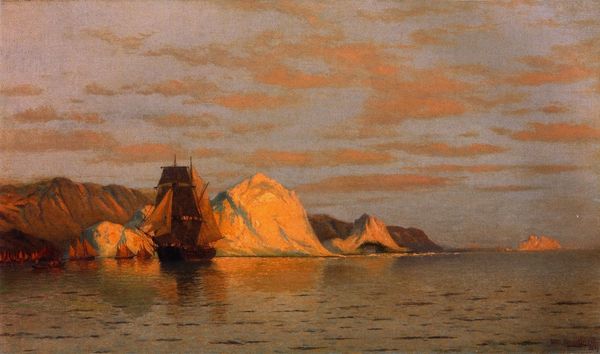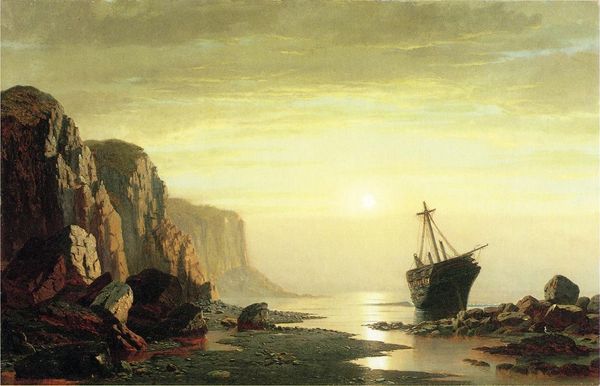
Copyright: Public domain
Curator: William Bradford's "The Panther, Icebound," painted in 1869, presents us with a desolate Arctic scene rendered in oil paint. Bradford was known for his depictions of the Arctic, often accompanying whaling expeditions. Editor: My first impression is a feeling of profound loneliness. The warmth of the golden sky clashes dramatically with the cold, blue expanse of the icy sea, highlighting the vulnerability of that wrecked ship. It speaks to a human ambition thwarted by an unforgiving environment. Curator: Indeed. Bradford’s work is interesting because it sits at a complex intersection. On one hand, we see the tradition of Romantic landscape painting with its emphasis on the sublime power of nature. But there’s also a tension, isn't there? These paintings were often commissioned to promote and document resource extraction. Editor: Exactly. This piece, in that context, becomes a visual record, and almost glorifies colonial ambition—or at least, witnesses it. Consider the symbolism. A ship, representing progress and domination, is rendered helpless. The 'panther', a symbol of power, is ironically icebound, rendered inert. Is this a cautionary tale or a romantic idealization? Curator: It’s hard to disentangle the two. Bradford's technical skill in capturing light on the ice and water is undeniable. Yet, these images were circulated widely, influencing perceptions and supporting the narrative of exploration. We also can't overlook the indigenous populations impacted by these expeditions. Editor: The absent presence. Precisely! These expeditions would have disrupted indigenous ways of life and challenged the ancestral claims to the depicted lands. By centering the European narrative of conquest and adventure, indigenous experience is erased, silenced beneath this gorgeous, fatal scene. Curator: It challenges us, as viewers, to confront that history. Bradford's artwork certainly has a dual legacy. It is undoubtedly visually beautiful, but it requires critical engagement. Editor: A haunting beauty, undeniably. I can’t shake the feeling that this work silently calls upon us to face the ethical dimensions inherent in its subject. The grand scope and harshness should lead us to contemplate the cost of venturing to uncharted landscapes.
Comments
No comments
Be the first to comment and join the conversation on the ultimate creative platform.
